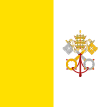
iiWiki
Regional Map w/ Names
Getting Started
Discord
Verthandi is a PT (Interwar/WW2 era) worldbuilding project with the aim of creating interesting stories and plotlines involving fascinating characters within our world.
What is Verthandi?
Verthandi is a fictional world, though it takes inspiration from our world as well as various other fictional worlds. As of now, we have a multipolar geopolitical climate headed mainly by religious conflicts. Largely affected by the First War of the Grand Coalition, the world stands at the brink of war yet again roughly 15 years later. On one side stands the Imperial Aventine Empire and it's many allies, espousing Christianity and divine right, lasting for millennia. Opposed to that is the Northern Coalition, which is comprised of Lyndaists, a syncretic and opposing religion that teaches that the Old Gods are not entirely gone. Both have, by now, stretched their influence throughout the globe, and stand poised to attack one another - the final battle in what would be by now an over 1200 year battle over Cybellum.
Scattered throughout the world are fledgling liberal republics and kingdoms, who believe that there may be more to life than religion. The peak example of this is the Grand Republic of Volkhov, which stands as one of the largest and richest nations on the planet. The revolutionary UFUR watches, waiting for it's chance to strike and liberate those under foreign rule. The ancient state of Fenghuang Wangchao nears civil war as factions within the court vie for power, but the Emperor proclaims it will not go quietly into the night. In Aestia, liberalism has taken a bigger hold, to the point where many in the continent embrace revolutionary beliefs, spreading their ideas throughout the world, hoping to change, what they see, for the better. All is not well, however, as the Suyu, the last bastion of pre-Colonial power, ignores ideology. Colonizers are colonizers, and they, according to the Suyu, should be removed from the continent. Alinora prepares for war in Hibernia, proclaiming the age of Pax Alinora has begun.
What can I expect in Verthandi?
Verthandi offers:
- A unique and interesting world, similar enough yet dissimilar enough to ours where one can jump in easily and feel at home in the existent nations.
- An active and engaging community.
- The opportunities to collaboratively worldbuild in multiple ways.
- A large amount of nations to choose from.
- A world with vibrant lore.
- A constantly changing political landscape.





